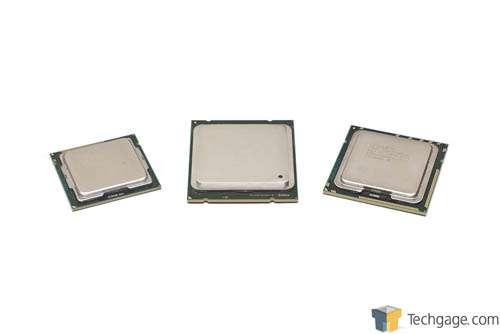Hmm... Ok, that TDP is just scary.
Anyways, is it me or this is a no-brainer that the only interesting offer is the 3960X?.
I don't see why? Naw, I'd disagree and say the 3930K is the only interesting chip. The 3960X costs twice as much and offers extra 3MB of cache to show for it. Since the $555 3930K is also unlocked just like the 3960X, it can be clocked (and overclocked) the same, but it still has six of the cores intact.
The 3920 is a tough call, but given pricing has not been given yet it's too early to say.
I've learned a few things already about this X79 platform:
- We can expect the X79 chipset to be "fixed" with the missing SCU features sometime before mid 2012.
- Ivy Bridge E (yes, IB-E), will launch in 2013 and be a drop in replacement for X79 LGA-2011 boards.
- SB-E is really Sandy Bridge-EP. Sandy Bridge-EP is an eight-core, 20MB L3 cache server chip. So in reality, the 3960X has 2 cores and 5MB cache disabled from the get-go.
While that is bad news, it does mean we will see 8-core chips on LGA-2011. They may come next year when Ivy launches, as a platform update, but they will definitely come in 2013 with Ivy Bridge E if not...
Want to read about SB-E, errr, Sandy Bridge_EP for servers? There's a link for that!
http://www.realworldtech.com/page.cfm?ArticleID=RWT072811020122


